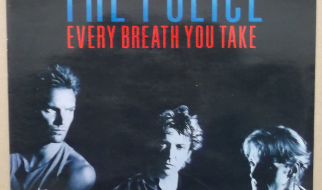Simple guidelines to draw and map out facial features on any female face in the front and side views.

1. Head and Face Shapes
Breaking down any subject you wish to draw into simple shapes is vital for a satisfying final result.
Think about it.
Capturing the essence of the face you want to create means thinking of the whole face itself from the very beginning and way before your pencil even moves. After all, you wouldn?t want to focus on specific details too early on in the sketching process without some kind of blueprint to orient them first.
The start of that blueprint is none other than using simple shapes like the circle.

How could such a trivial thing like a circle be so crucial to the beginning stages of a sketch?
Well, ignoring this first step can lead to some difficulty in capturing the angle of the head later, which would then become overwhelming once it?s time to orient yourself in drawing other features of the female face.
But, there is a slight difference between these two circles ? one of them is technically an oval because of the angle the face will be drawn in ? and they both serve as foundations for the human head; providing clues as to what directions the heads will be facing.

Once the head is drawn, the rest of the face shape follows. No matter what kind of face you have in mind, it?s important to get the general shape of it and connect it to the head.
2. The Mask
This is by far the most helpful and important step for me when it comes to drawing any kind of portrait. The head and face are already sketched out at this point, serving as the base for the facial features that will go within them.
In terms of finding a specific technique, it helps to map out the general areas where all of those features will be. This is something I practice doing by creating a ?mask? within the face.

When creating this mask, I make sure to use the outline of it as an indicator of how much space those facial features will take up; acting as a cage to hold them in. This means making sure they will only occupy the space within the mask while the rest is left out. Doing this should make it easier to distinguish the negative spaces in the face like the forehead, cheeks, and chin from the actual features.

The next technique I use in order to position these facial features is to use the guidelines as indicators of accurate proportions and sense of direction. They are also helpful for estimating the distance between the eyes, nose, and mouth along the length of the face. But the most crucial aid of all is their ability to direct where the face itself is looking.
I do this by making two horizontal lines run across the face; signaling where the eyes and the bottom of the nose should be. Between the space of those two lines is where I estimate the ear to be located.
For me, the combination of these two techniques makes it quite obvious which direction the head is facing and act as foundations for what the head and face will look like.
3. Eyes
The eyes are definitely a very important part of a portrait. They dictate the overall mood of that drawing, giving the viewer some insight into what you want them to feel when they look at them.
Achieving that kind of emotion when drawing them is a whole other story, but for now let?s focus on the importance of knowing where to position them in the first place.
Personally, I find that the best way to position the eyes correctly on the face is to rely on the steps I mentioned previously. They are truly the blueprints for every other step in this process and they all pile on top of one another. As stated previously, the lines drawn across the head serve as indications of where certain features are in relation to others.
I always use the first line on the upper half of the face to show me where the eyes should be drawn.
For most faces, the eyes would go directly on top of that line. It is also the line that indicates where the top of the ear is usually located.

That guideline always helps me decide where the eyes are placed in relation to the entire head.
But, what about the spacing between the eyes?

Well, a well-known technique I?ve found to be helpful is to pretend there?s a third eye between the two real ones. In fact, it?s great to actually draw it during the planning stages of your portrait.
It will help you draw both eyes and ensure they have the proper amount of distance between them.
4. Ears
Personally, I find that the ears serve as landmarks for the rest of the facial features.
This means that I orient myself by making sure to map out the ears once the two lines are drawn across the face by creating two small ovals on the sides. Once the ears are included in the planning process, they provides me a clearer vision of where the eyes and nose should be.

The actual size of these ovals can vary since there are several types of ears. Some are long while others are a bit more curled up. Other types of ears remain closer to the sides of the person?s face while others protrude.
A great way to study any kind of ear shape is to focus on real life examples.
Study your own and look at people around you, seeing just how unique ears can be with just by some slight alterations.
5. Nose
Just how I like to approach everything else I draw, creating any kind of nose involves simple shapes.

I like to draw a circle in the middle where the nose should be to represent the tip of it and then draw two smaller circles (ovals) on either side of it.
The two circles are the sides of the nose and where the nostrils will go.
There are several types of noses in every person. So, it is always a good idea to look for references and be aware of all the visual possibilities before deciding which ones to integrate into your own drawings.

While it?s great to have a general idea of what kind of nose you?d like to draw in mind, remember that it is also important to know where to place it on the face.
The outer corners of the nostrils should generally be aligned with the tear ducts of both eyes. Using that guideline shows the general area the nose takes up, but the actual size of could always change.
I also make sure to follow the other guidelines across the face by ensuring the length of the nose fits within the space between those lines. This ensures that the top of it starts in the middle of the eyes as the bottom ends around the same guideline where the ears end as well.

6. Mouth
The lips are yet another facial feature that helps create a unique face.
I first determine the type of lips I want to draw by looking at some references. This truly helps inspire me to explore different lip shapes that I perhaps didn?t even think about, so do not hesitate to use them for yourself throughout the drawing process.

The next step is to lay down the foundation of the mouth itself by drawing the lip line first and therefore establishing the emotions involved in the portrait.
It is the moment when I decide if I want parted lips, smiling, down-turned, etc. These are all to show the feeling I?d like to portray in the drawing.
After that, I use the ?simple shapes? approach once again. This means drawing two ovals to represent the top lip and a big one for the bottom. However, these shapes can definitely be altered depending on the shape and sizes of those lips.
To change the lips for a character, it is important to alter the ovals mentioned before throughout the sketching process. For example, if the top lip is thinner then the ovals should be stretched a bit more. This allows the shapes that frame the lips to be closer to the lip line, which makes them look a bit thinner. And of course, the opposite applies for thicker lips.

Again, relying on previously drawn guidelines will always help with the positioning of the facial features. The placement of the mouth can be estimated quite easily by using the eyes as landmarks.
I always anchor the mouth by making sure the corners of it are directly lined up with the middle of the eyes. That helps keep the length of the mouth accurate on the face.
7. Stylized Proportions
These guidelines serve as a general concept of what a female face looks like. However, they can also be altered or stylized into something from your imagination.
While there is a general consensus of how and where these features should be placed on the face, it is easy to see that slight differences are responsible for the unique faces we see all around the world.

You can confirm this by simply looking in the mirror and analyzing your own features. While there may be some exceptions in terms of sizes and spacing, our features follow a rough outline that can then differ from others.
Everyone is unique.
It is important to keep that in mind as an artist while drawing any characters or portraits.
As you live within this world, exercise your ability to actually study all that surrounds you, and take it as inspiration for your own creations.
To learn more about drawing different types of female faces and see my real-time process of drawing them, you can check out the class I created all about it!
Keep on creating!

